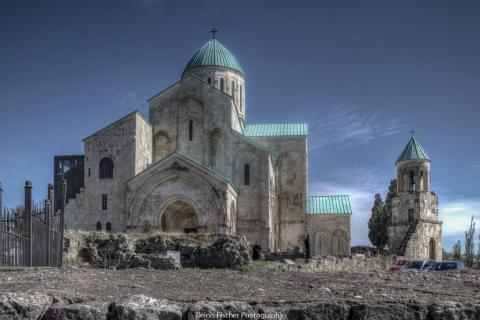Bagrati Cathedral probably is among the most iconic site to visit in Georgia, and it should be a must have on your travel list if you have been in those parts of Georgia (Kutaisi). If you are traveling to or from Kutaisi International airport take your time and pay a visit here.
In fact I have visited Bagrati cathedral just between my travels to or from Kutaisi airport. So did happened my first visit here after I had been living in Georgia for more than 3 years. And so did happened when I last time took my mom here after she arrived to Kutaisi.
P.S. Both of my parents have visited Bagrati Cathedral while visiting me in Georgia.
I was eager to play with a HDR images for my digital photography school project and here are some lovely photos of Bagrati Cathedral.
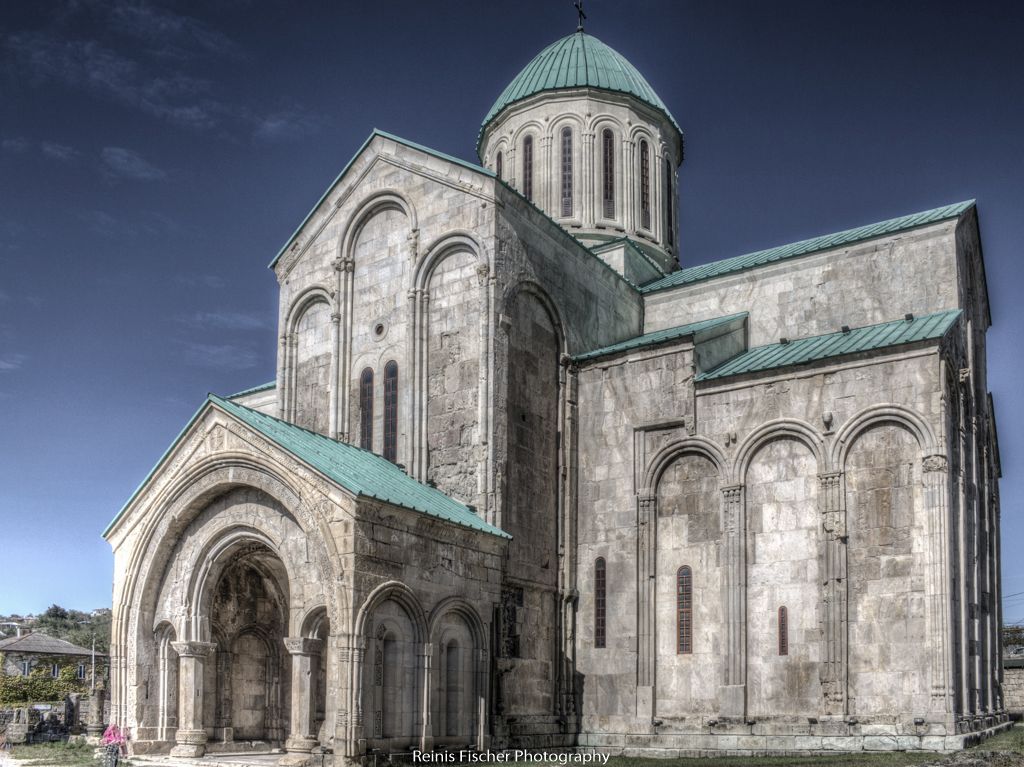
Bagrati cathedral in HDR
It was a lovely October Sunday, weather was great and managed to take a decent HDR with super rich architecture and blue skies. Just lovely.

Bell tower at Bagrati Cathedral
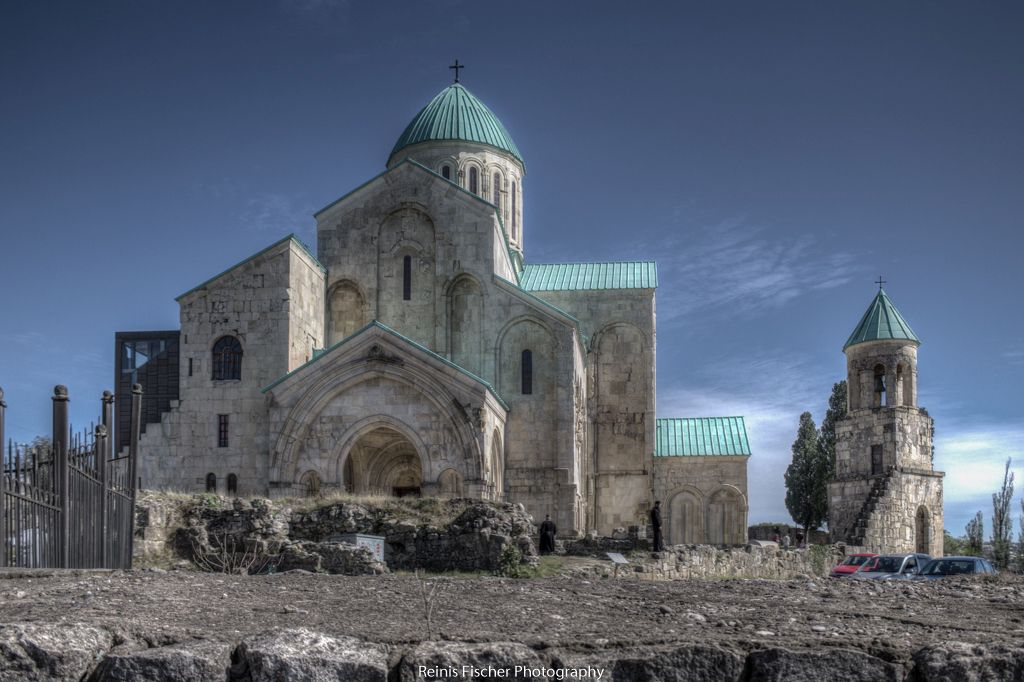
Bagrati cathedral and bell tower in HDR
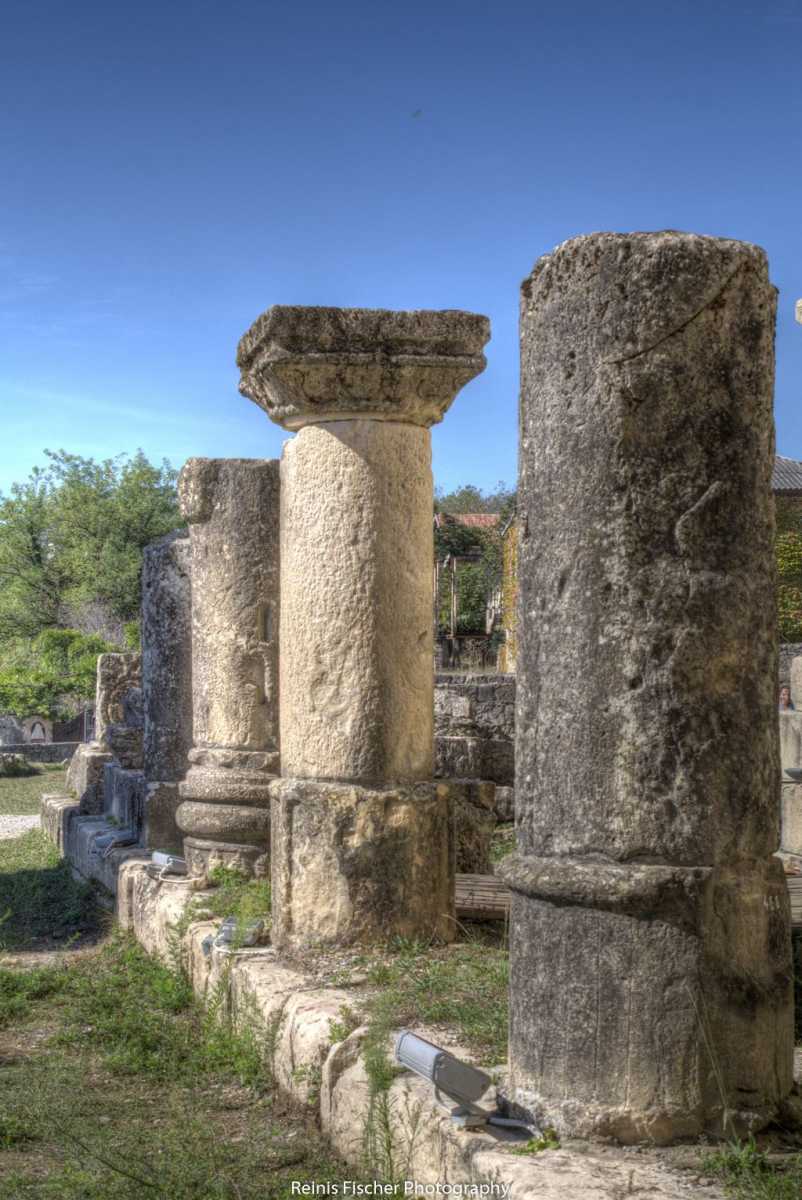
Old stone pillars at Bagrati cathedral
Bagrati Cathedral was built in the early years of the 11th century, during the reign of King Bagrat III, due to which it was called "Bagrati", i.e., Bagrat’s cathedral. An inscription on the north wall reveals that the floor was laid in "chronicon 223", i.e., 1003. In 1692, it was devastated in an explosion by Ottoman troops who had invaded the Kingdom of Imereti. The incident caused the cupola and ceiling to collapse

Candlestick inside Bagrati Cathedral

Candlestick inside Bagrati Cathedral

Altar inside Bagrati cathedral

Dome / Cupola inside Bagrati cathedral

Entrance doors at Bagrati cathedral
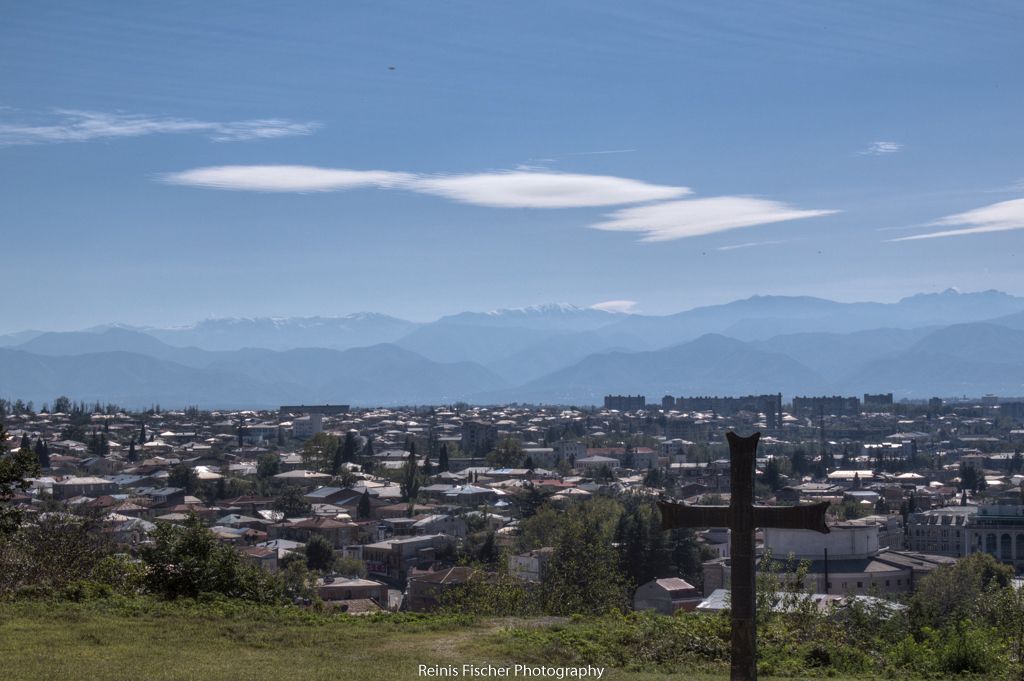
View to Kutaisi city from Bagrati cathedral
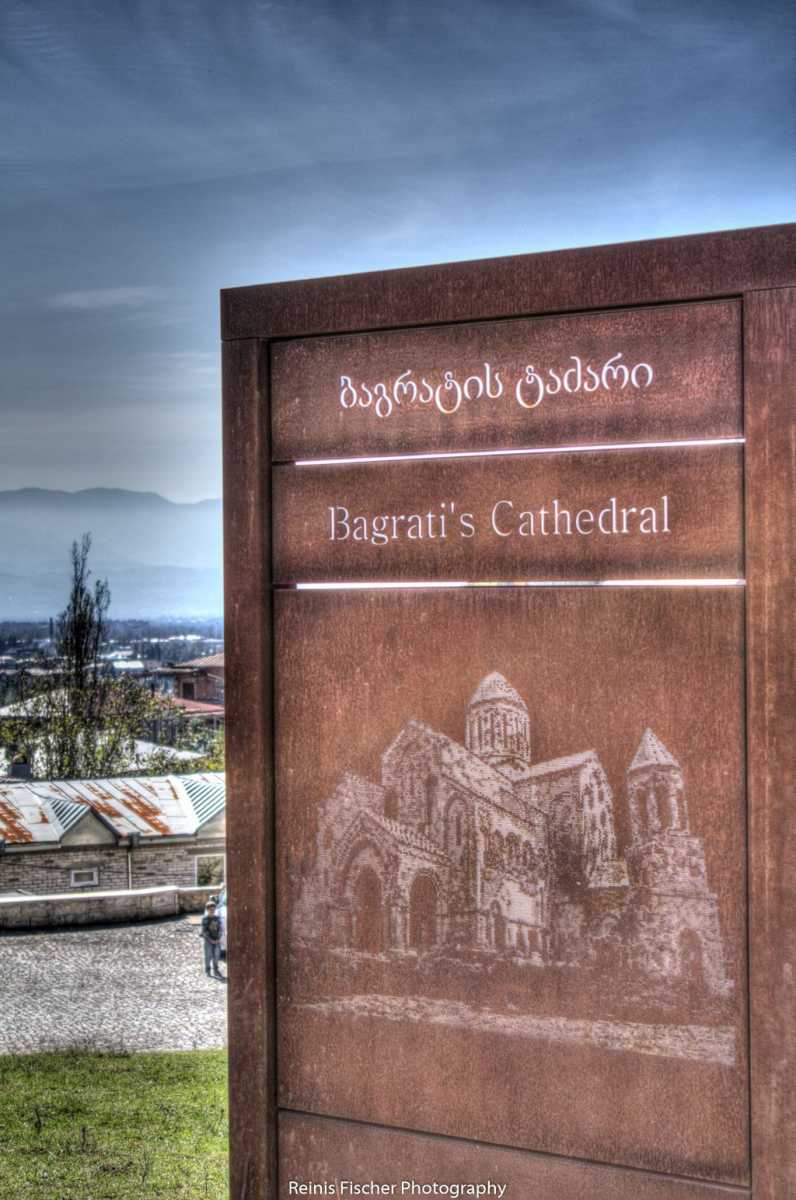
Bagrati's Cathedral - info sign near cathedral
About Bagrati Cathedral
The Cathedral of the Dormition, or the Kutaisi Cathedral, more commonly known as Bagrati Cathedral, is the 11th-century cathedral church in the city of Kutaisi, the region ofImereti, Georgia. The cathedral, rebuilt officially on September 16, 2012 after heavy damage ages ago, served as a masterpiece in the history of modern and medieval Georgian architecture.
A distinct landmark in the scenery of central Kutaisi, the cathedral rests upon the top of Uk’imerioni Hill. It was built in the early years of the 11th century, during the reign of King Bagrat III, due to which it was called "Bagrati", i.e., Bagrat’s cathedral. An inscription on the north wall reveals that the floor was laid in "chronicon 223", i.e., 1003. In 1692, it was devastated in an explosion by Ottoman troops who had invaded the Kingdom of Imereti. The incident caused the cupola and ceiling to collapse.
Conservation and restoration works, as well as archeological studies, began in 1952. In 1994 the Bagrati Cathedral, together with the Gelati Monastery, was included in UNESCO's World Heritage Site list as a single entity. In 2001, ownership of the cathedral was transferred from the Georgian state to the Georgian Orthodox Church. It is now of limited use for worship services, but attracts many pilgrims and tourists. It is also frequently used as a symbol of the whole city of Kutaisi, being one of its main tourist attractions.
